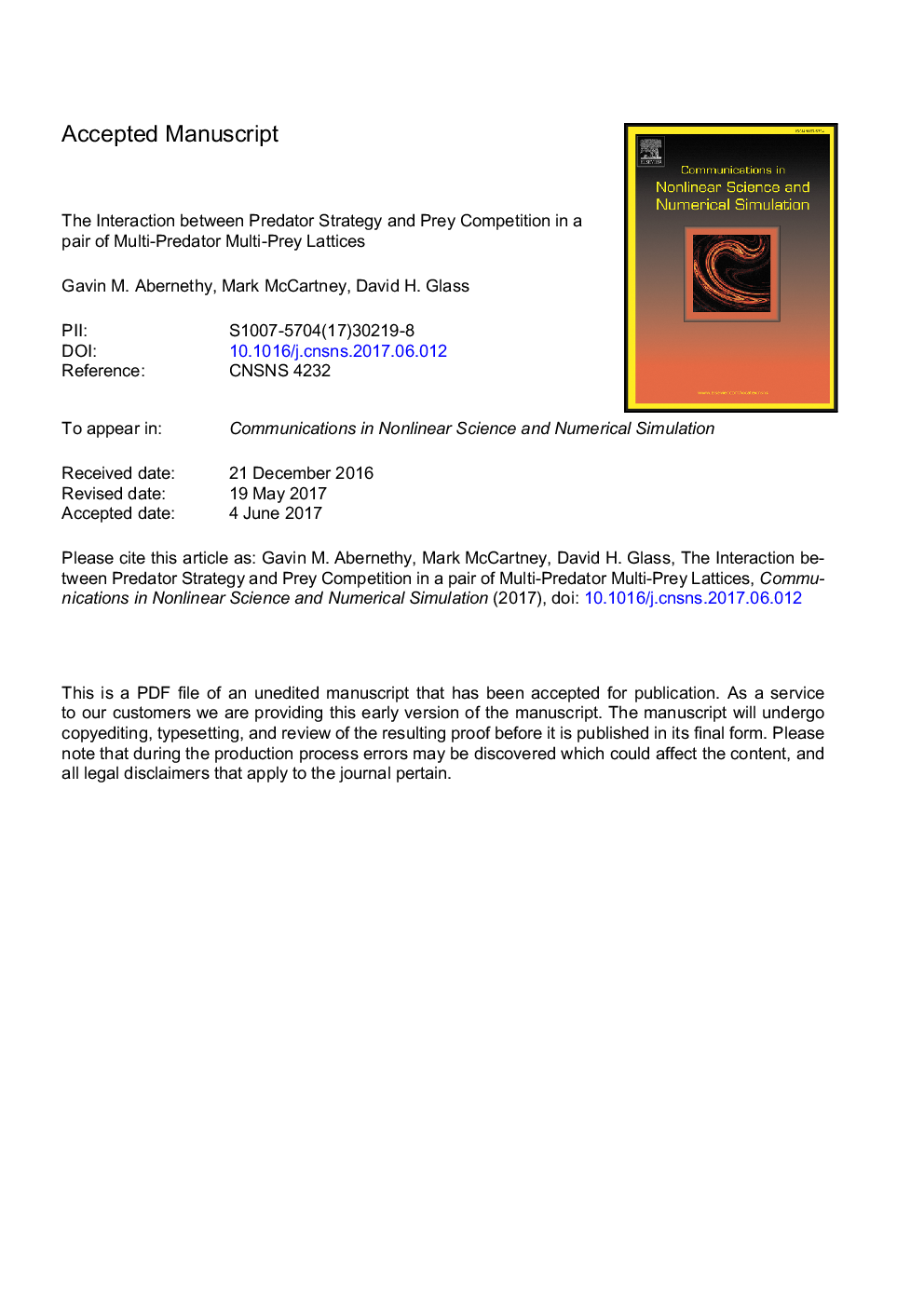| Article ID | Journal | Published Year | Pages | File Type |
|---|---|---|---|---|
| 5011311 | Communications in Nonlinear Science and Numerical Simulation | 2018 | 31 Pages |
Abstract
A computational study of a system of ten prey phenotypes and either one or ten predator phenotypes with a range of foraging behaviours, arranged on two separate one-dimensional lattices, is presented. Mutation between nearest neighbours along the prey lattice occurs at a constant rate, and mutation may or may not be enabled for the predators. The significance of competition amongst the prey is investigated by testing a variety of distributions of the relative intraspecific and interspecific competition. We also study the influence this has on the survival and population size of predator phenotypes with a variety of foraging strategies. Our results indicate that the distribution of competition amongst prey is of little significance, provided that intraspecific is stronger than the interspecific, and that it is typically preferable for a predator to adopt a foraging strategy that scales linearly with prey population sizes if it is alone. In an environment of multiple predator phenotypes, the least or most-focused predators are most likely to persist, dependent on the feeding parameter.
Related Topics
Physical Sciences and Engineering
Engineering
Mechanical Engineering
Authors
Gavin M. Abernethy, Mark McCartney, David H. Glass,
